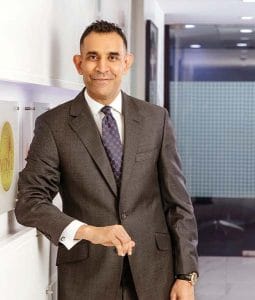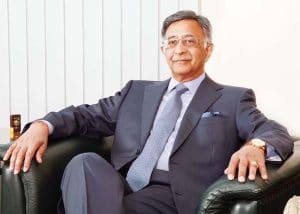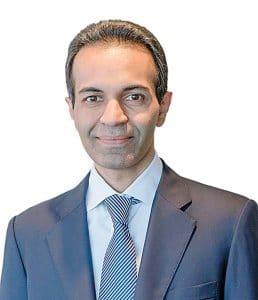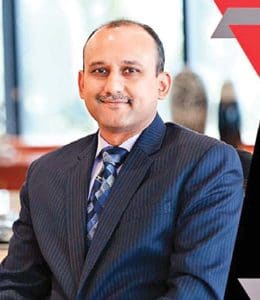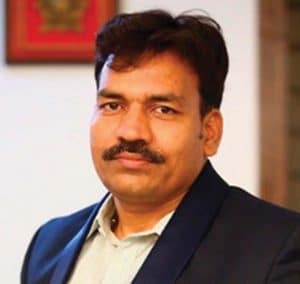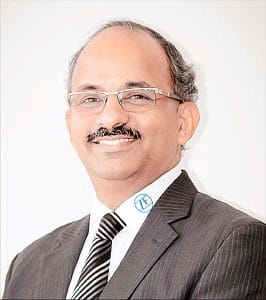The Union Budget 2022-23 surprised a section with its focus on long-term growth. Ashish Bhatia looks at the allocations and implications for the commercial vehicles segment.
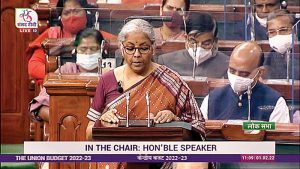
It’s not easy to please all! Who better than Finance Minister (FM) Nirmala Sitharaman to vouch for it as she knows what it feels like to walk on thin ice. Not an exclusive sense of dichotomy, it’s been the case with any Finance Minister tasked with appeasing all sections of society, in one go, on budget day. In her fourth budget, the FM, despite year-long allocations and interventions was duty-bound to present the balance sheet ‘As-Is’ and make provisions for fresh allocations from the Centre as expected by the stakeholders of the commercial vehicles industry from the annual spectacle. Especially, since the economic recovery was marred the third time around by the Omicron mutation of the Covid-19. In the third consecutive year of the pandemic, she was expected to dole out allocations akin to a booster jab for instant growth. And so, she was expected to announce a majority of measures for the near to mid-term. Instead, the FM in a unanimous word on the street, surprised a large section, with a long-term focused budget, tabled and deemed apt for sustainable growth. “Brevity has always been a virtue,” tweeted Anand Mahindra on the shortest budget speech by the sitting FM to sum up the overall business sentiment as she concluded.
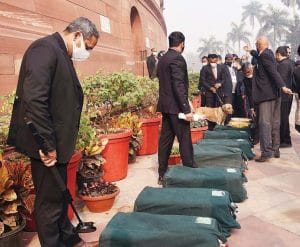
Starting off the customary Union Budget 2022-23 speech, the FM began on a sombre note as she extended empathy towards victims of the pandemic, those who experienced adverse impacts. From thereon, she shifted gears to remind the House of the interventions in the recent past that lay the foundation for her announcements. “The overall, sharp rebound and recovery of the economy are reflective of our country’s strong resilience. India’s economic growth in the current year is estimated to be 9.2 per cent, the highest among all large economies,” she asserted. Drawing attention to the speed and coverage of the country’s vaccination and the improvement made on health infrastructure in the past two years, the FM opined that the country is in a strong position to withstand challenges.
India at 100
Referring to the vision for India at 100 in a 25-year lead-up from India at 75, she went on to highlight the key goalposts, ranking high on the Government of India (GoI) agenda. These comprise of macro-economic level growth focus with a micro-economic level all-inclusive welfare focus, promoting digital economy and fin tech, technology-enabled development, energy transition, and climate action. It also included relying on a virtuous cycle, starting from private investment with public capital investment, and helping to crowd-in private investment. “The Productivity Linked Incentive in 14 sectors for achieving the vision of AtmaNirbhar Bharat has received an excellent response,” she added, referring to 115 companies recently applying under the scheme, including the Champion OEMs. With the scheme expanding to Advanced Chemical Cell (ACC), for example, it is expected to create 60 lakh new jobs, and an additional production valued at 30 lakh crore over the next five years.
A sharp increase in capital expenditure
The FM announced to sharply increase the Capital Expenditure (CAPEX) for 2022-23 by 35.4 per cent, from 5.54 lakh crore (revised to 6.03 lakh crore this year) in 2021-22 to 7.50 lakh crore for 2022-23). The total expenditure of Rs.39.45 lakh crore is estimated at 2.9 per cent of the GDP (2.2x the expenditure of 2019-20). Total receipts other than borrowings are valued at Rs.22.84 lakh crore. The FM drew attention to the CAPEX amounting to 10.68 lakh crore when clubbed with ‘Grants-in-Aid’ for states. According to the FM, the move, building over the previous years provision, will ensure the economic recovery benefits from the multiplier effect. (Refer to graph on pg 28*). Last year’s Rs.34.83 lakh crore total budget estimates projection was also revised to Rs.37.70 lakh crore. This year, infrastructure continued to be a focus area too. The FM laid down priorities that included the PM GatiShakti, Inclusive Development, Productivity Enhancement and Investment, Sunrise Opportunities, Energy Transition, and Climate Action besides sharing a road map on financing the Investments.
PM GatiShakti
The PM GatiShakti was cited as a transformative approach for economic growth and sustainable development. Of the seven engines driving it, roads, ports, mass transport and logistics infrastructure found a prominent mention in the speech. Tasked with the responsibility of pulling the economy in unison, the GoI intends to support the vision with a holistic development plan. At this point, the ‘National Master Plan’ was cited and attention was drawn to the importance of putting in place, seamless multimodal connectivity and ensuring logistics efficiency. State governments were tasked with providing supporting infrastructure, in line. The FM laid stress on planning, financing including through innovative ways, use of technology, and speedier implementation. The FM called for a need to synergise different modes of movement, both of people and goods including a selection of project locations, focused on raising productivity, and accelerating economic growth and development.
Assuring that the PM GatiShakti Master Plan for expressways would be formulated in 2022-23 to facilitate faster movement of people and goods, a big announcement on the expansion of the National Highways (NH) network by 25,000 km by mobilising Rs.20,000 crore gave hope to the CV industry. On account of offering a seamless multimodal movement of both goods and people, the FM revealed the plan to bring the data exchange among all mode operators on a Unified Logistics Interface Platform (ULIP), designed for Application Programming Interface (API). It is expected to reduce logistics cost and time, assist Just-In-Time (JIT) inventory management, and eliminate tedious documentation that transporter bodies express displeasure on, often. Stakeholders stand to gain from real-time status and an open-source mobility stack, for seamless people transport if implemented as envisioned. The industry will also watch out for contracts to be tendered for implementation of multimodal logistics Parks at four locations through PPP mode in 2022-23. 100 PM GatiShakti cargo terminals for multimodal logistics facilities were also announced with a three-year development plan. Stress was also laid on offering adequate connectivity between mass urban transport and railway stations.
Development of the North East
Under the Prime Minister Development Initiative for North-East (PM-DevINE), the North-Eastern Council will overlook execution. From funding infrastructure to align with the PM GatiShakti to addressing voids through social development projects over and above the central and state schemes in place. The budgetary allocation included an Rs.1500 fund to kick start the development programmes. Under the ‘Vibrant Villages Programme’, villages on the Northern border will gain access to accelerated development of infrastructure, tourist centres and road connectivity expected to boost the demand for CVs in the region.
Ease of doing business 2.0
In the second leg of ‘Ease of Doing Business’, the FM announced ‘trust-based governance’. It seeks active involvement from stakeholders involved. Digitisation of manual processes and interventions, integration of centre and state-level systems using IT bridges, single-point access for citizen-centric services and standardisation and removal of any overlapping compliances was emphasised. The Centre sought to build an active feedback mechanism with the involvement of both citizens and businesses. Expecting a half of the population, when India turns 100, to migrate to urban regions, the budget stressed the importance of parallel urban development. Nurturing megacities and their hinterlands to turn centres of economic growth, the FM called for the need to steer a paradigm change. To implement it, a proposal to constitute a high-level committee of reputed urban planners, economists and institutions was reiterated. The Centre committed to aiding states in their urban capacity building plans by offering financial support for mass transit projects and Atal Mission for Rejuvenation and Urban Transformation which encompasses providing basic infrastructure like urban transport.
Clean and sustainable mobility
Clean and sustainable mobility found a big mention in the FM budget speech! The FM shared the GoI’s intent to promote the shift to public transport in urban areas. It would be complemented by cleantech and governance solutions, special mobility zones with zero fossil-fuel policy, and EVs. To address the issue of space constraints faced whilst setting up charging infrastructure in urban areas, she informed of the centre coming out with a battery swapping policy and formulating inter-operability standards much to the delight of the industry. The FM informed the House, that the private sector will be encouraged to develop sustainable and innovative business models for ‘Battery or Energy as a Service’ expected to improve efficiency in the EV ecosystem. Data Centres and Energy Storage Systems including dense charging infrastructure and grid-scale battery systems were also awarded infrastructure status which the FM opined would facilitate highercredit availability.
Connected mobility could also expect to get a boost with 5G mobile services targeted for rollout within 2022-23 by private telecom providers after undertaking spectrum auction in 2022. Efforts will be made to create a level playing field for tier towns as urban metros with an emphasis on facilitating access to digital services by 2025. The budget allocations outlined spending for near and long term action strategy of GoI on this front.
In the Budget speech, the role of the circular economy was also outlined. The Centre, claimed the FM, was ready with action plans on 10 sectors including End of Life Vehicles (ELVs). It committed to addressing cross-cutting issues of infrastructure, reverse logistics, technology up gradation and integration of the informal sector that the opposition parties recently criticised the government for its alleged neglect leading up to the budget.
Farm mechanisation
Farm mechanisation can expect to benefit from the impetus on agriculture in the budget outlay too. From assuring Rs.2.37 lakh crore Minimum Support Price (MSP) transfer directly to farmer accounts to promoting chemical-free farming to increasing domestic production of oil seeds, Union Budget 2022-23 had FM commit to delivery of digital and hi-tech services to farmers with involvement of public sector research and extension institutions along with private agri-tech players and stakeholders of the agri-value chain. A scheme in PPP mode will be launched, she informed the House of Parliament. A fund with blended capital, raised under the co-investment model, will also be facilitated through NABARD. It is aimed at financing startups in the farm produce value chain and will boost machinery for farmers on a rental basis among other such initiatives. Stress was also laid on helping farmers adopt appropriate harvesting techniques with a package that will have participation from states. Its implementation could benefit farm equipment manufacturers in the long run.
Initiatives for MSMEs
For MSMEs, the FM announced initiatives aimed at formalising the economy and enhancing entrepreneurial opportunities. By interlinking the Udyam, e-Shram, NCS and ASEEM portals, the Centre is also looking at providing G2C, B2C and B2B services which would link back to credit facilitation, skilling and recruitment. The Emergency Credit Line Scheme (ECLS) claimed to extend credit to 130,000 MSMEs was extended up to March 2023 with its guarantee cover expanded by 50,000 crores to a total of five lakh crore. A Credit Guarantee Trust aimed at the infusion of funds is expected to aid MSMEs with an additional credit line of two lakh crore. Through the Raising And Accelerating MSME Performance (RAMP) programme, an outlay of Rs.6000 crore will be rolled out to help the sector turn more resilient, competitive and efficient. Businesses in the past have expressed hesitancy to apply for credit to meet a relatively higher working capital requirement during the peak of lock downs when faced with a liquidity crunch for the fear of inability to repay debt.
DEFENCE LOCALISATION
The need to localise Defence equipment was reiterated in the FM speech. The GoI revised the capital procurement budget and enhanced the upward limit capped at 58 per cent in 2021-22 to 68 per cent for 2022-23. Defence R&D, the FM announced, will be opened up for industry, startups and academia and 25 per cent of the R&D budget was set aside for it. To top up the private industry encouragement on taking up design and development of military platforms and equipment in collaboration with DRDO and other organisations the SPV model, the testing and certification requirements will be met by an independent nodal apex body. Artificial Intelligence, semiconductors, green energy and clean mobility were pointed as sunrise opportunities with an employment generation potential.
Promoting exports
To promote exports, the FM announced the replacement of the Special Economic Zones (SEZ) Act with new legislation. Laying greater stress on involving states as partners in ‘Development of Enterprise and Service Hubs’, the initiative is intended to cover all large existing and new industrial enclaves to optimally utilise the available infrastructure and enhance healthy competition.
Financing budgetary allocations
As per a Ministry of Finance, statistic, read out by the FM, in 2020-21, venture capitalists and PE funds invested a staggering amount of 5.5 lakh crore in the startup and growing ecosystem. To scale up the investment further, the FM committed to set up an expert committee to examine and suggest appropriate measures. The government has also decided to promote thematic funds for blended finance. The FM shared, the government share will be capped at 20 per cent with the private fund managers given the onus of managing the funds. Infrastructure projects, like in the past, will be enhanced by scaling up private capital. One will have to wait and see the impact of the digital rupee (Central Bank Digital Currency) backed by blockchain technology and to be issued by the RBI in 2022-23 on the CV sector as an additional inclusion in the digital ecosystem developed post demonetisation.
On the bone of contention, often between states and the centre, central funding, the FM announced the enhanced capital outlay under the ‘Scheme for Financial Assistance to States for Capital Investment’, from Rs.10,000 crore in the budget estimates to Rs.15,000 crore in the budget estimates for 2022-23. For states to catalyse investments as their contribution to the economy, the budget set aside one lakh crore in a 50-year interest-free loan arrangement in addition to the regular borrowing. With the above allocations, the FM stated the government expects the fiscal deficit to hover around the 6.4 per cent of the GDP mark, in line, to bring it down to sub 4.5 per cent by 2025.

A move looked like at as a direct benefit to the startups, the supply-side, the FM, in part B of her speech announced the extension of tax incentives for three years (out of 10 years of incorporation) from March 31, 2022, by an additional one year (March 31, 2023). The FM also announced the extension of the 15 per cent concessional tax applicable to newly incorporated domestic manufacturing companies by an additional year, from March 31, 2023, to March 31, 2024. The move to cap long-term tax gains on transfer of assets other than equity, revised downwards, from 37 per cent to 15 per cent, could also prove to be beneficial to the startups and manufacturing ecosystem.






